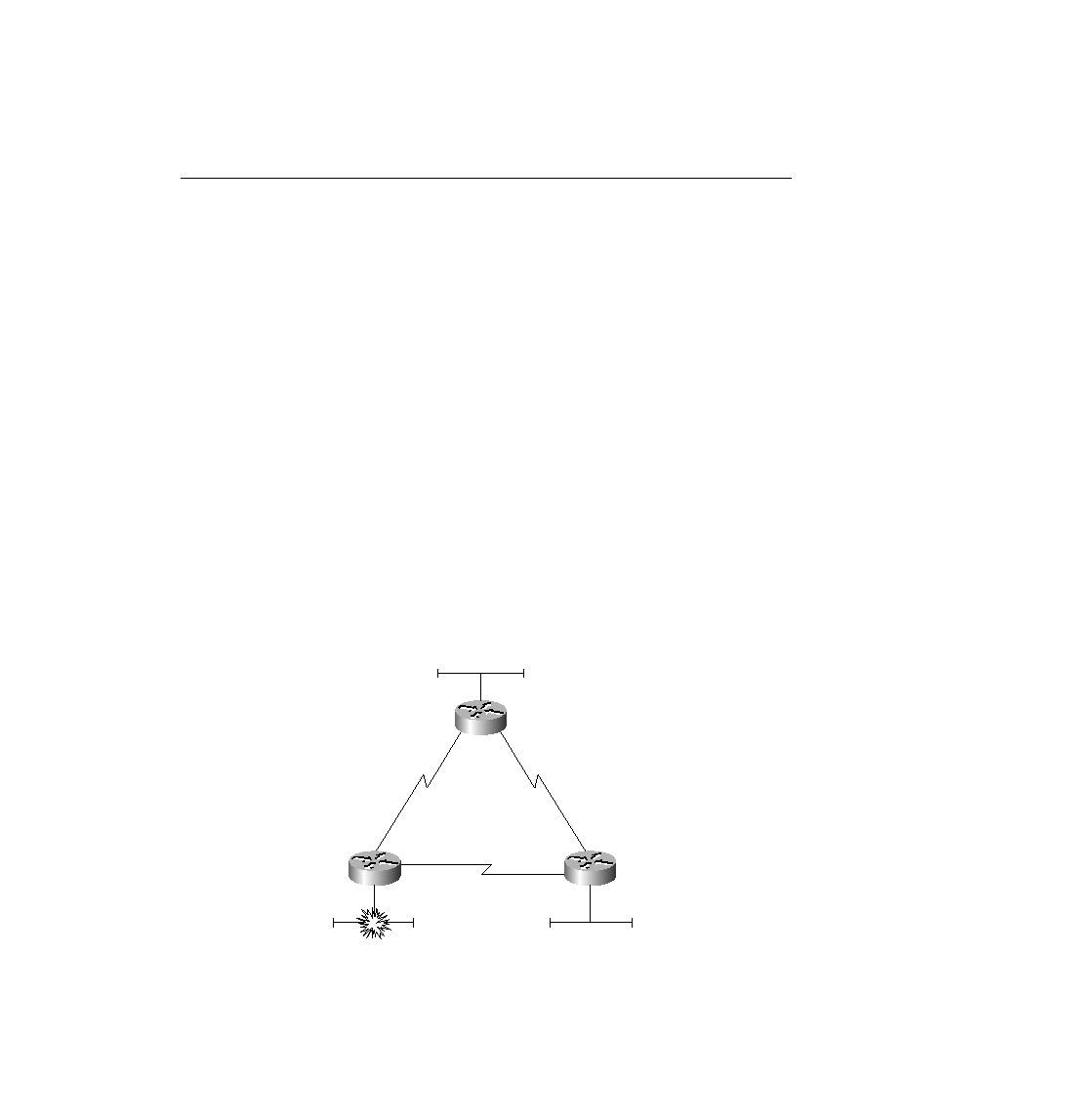
and reliability. By default, only the bandwidth and delay are considered; the other parameters
are considered only if enabled via configuration. Delay and bandwidth are not measured values
but are set via the delay and bandwidth interface subcommands. (The same formula is used
for calculating the metric for EIGRP, but with a scaling factor so that the actual metric values
are larger, allowing more granularity in the metric.)
example, the route to 10.1.4.0 shows the value [100/8539] beside the subnet number. The metric
8539 is a single value, as calculated based on bandwidth and delay. The metric is calculated (by
default) as the sum of the inverse of the minimum bandwidth, plus the cumulative delay on all
links in the route. In other words, the higher the bandwidth, the lower the metric; the lower the
cumulative delay, the lower the metric.
Protocols." RIP and IGRP are distance vector routing protocols that implement split horizon
and route poisoning; these can be better understood by examining debug messages. Figure
6-10 and Example 6-3 show a stable network with split horizon rules that affect the RIP
updates. Then Ethernet 0 on Yosemite is shut down, and Yosemite advertises an infinite distance
route to 10.1.2.0, as seen in Example 6-4.